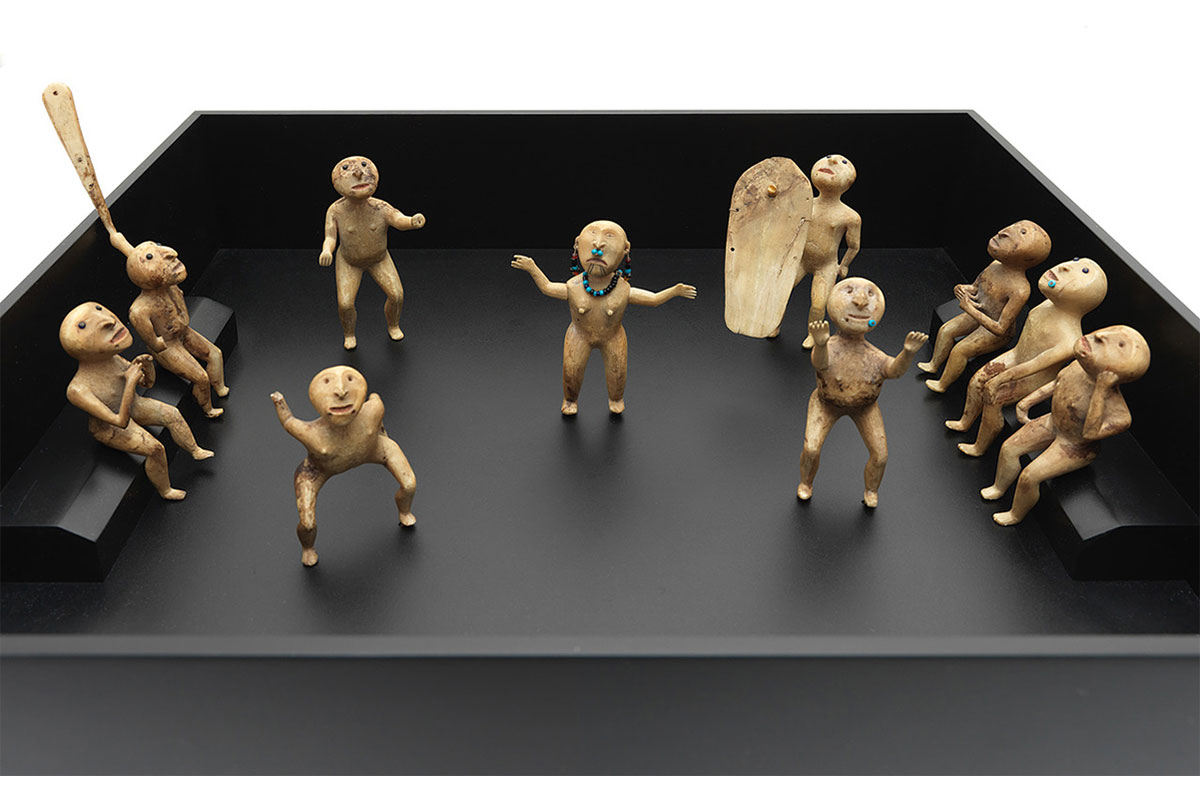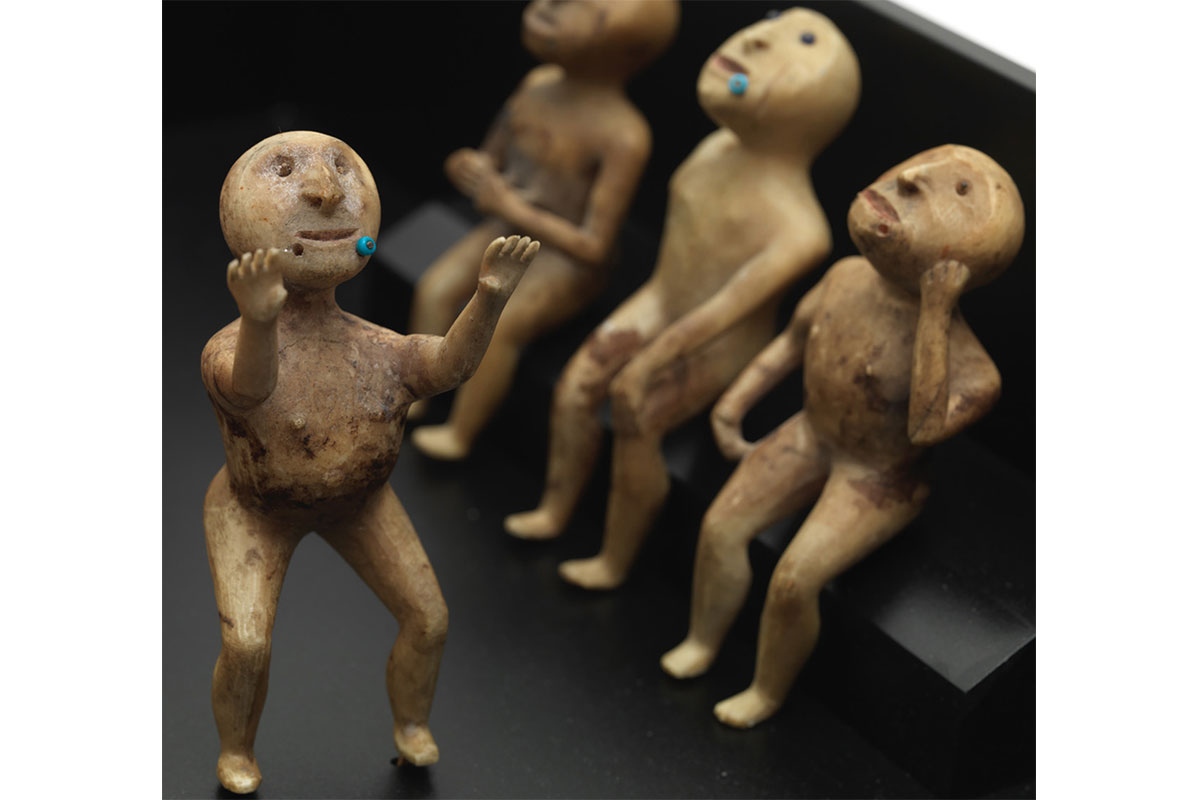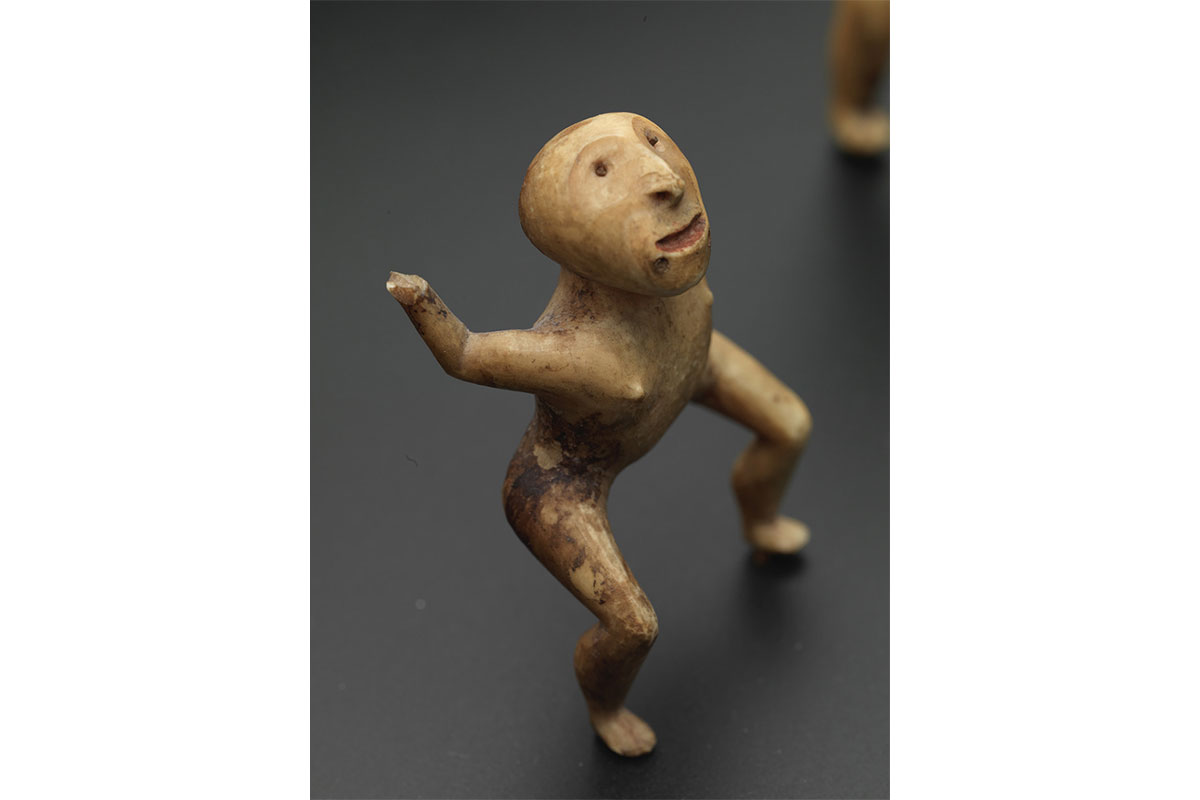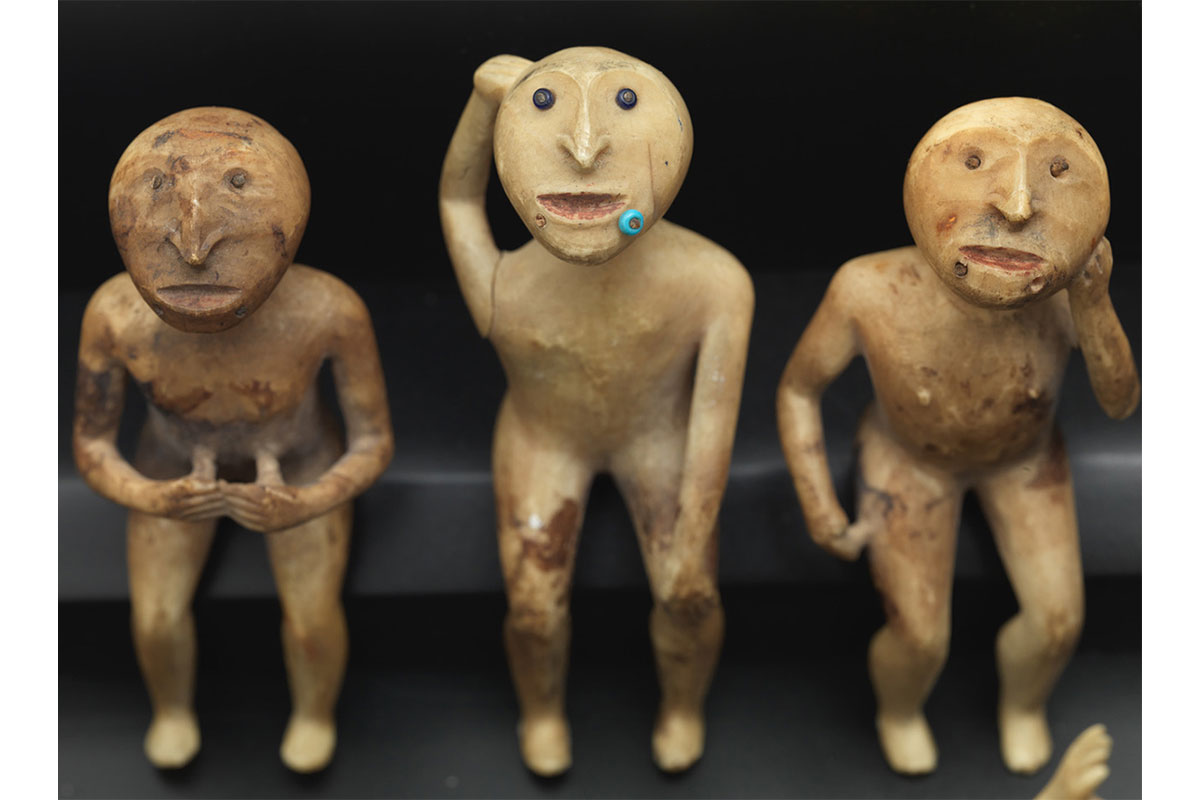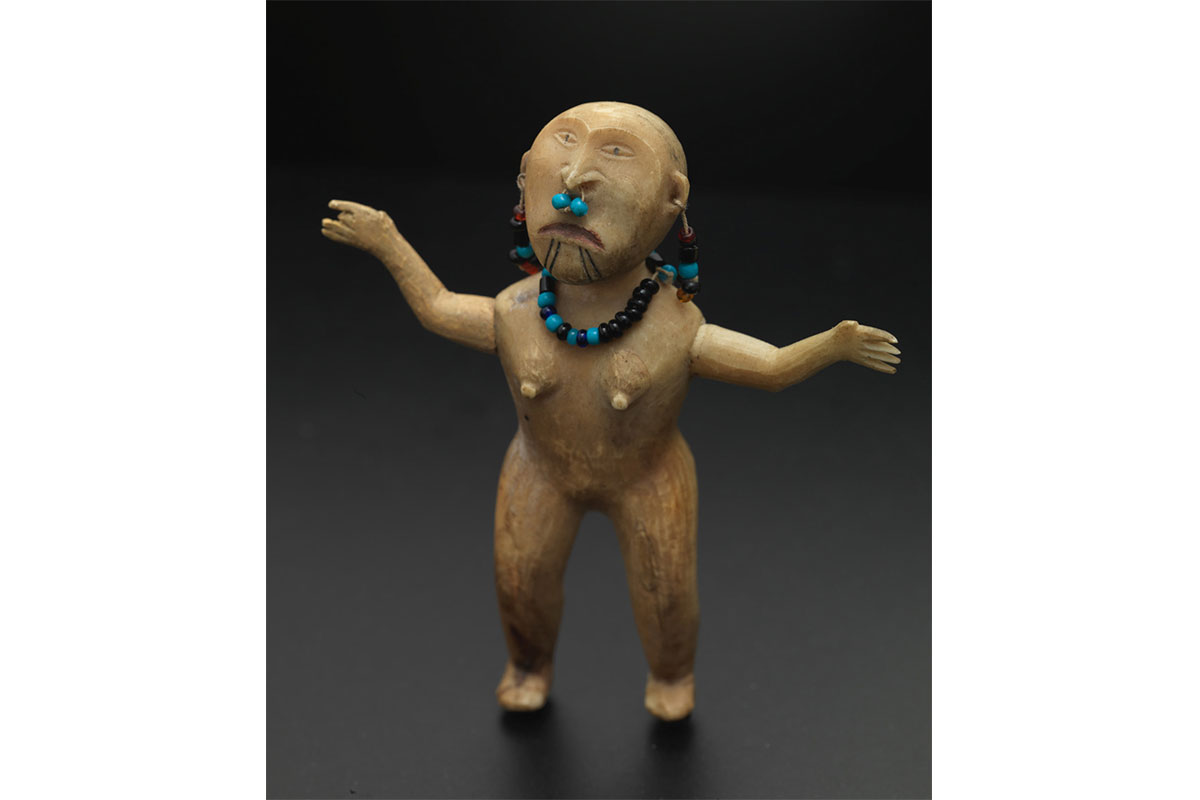Qasgiq Dance Figures
Southwest Alaska
late 19th century
marine mammal ivory, glass beads
height: 3 ½"
Inventory # E4265
Sold
PROVENANCE
Private collection, Ohio
RELATED EXAMPLES
Sheldon Jackson Museum, Sitka, Alaska, Nos. IIH31 and IIS1 - See: The Living Tradition of Yup'ik Masks, Riordan, University of WA Press, 1996, pgs. 37, 122 and 123
The finely carved ivory figures illustrated here capture a moment of elaborate dancing and singing inside a Yup’ik communal men’s house, or gasgiq. We see four figures dancing around a female shaman, identified by her distinctive facial tattoos, a beaded nose ring, necklace and earrings. Five more figures are seated to either side of the scene. Each figure expressively rendered, mouths opened, they likely engage in communal chanting. Qasgiqs were important social and ceremonial dwellings where men engaged in activities such as wrestling or sweat baths and where community dances were hosted and origin stories were told.
Yup’ik carvers rarely produced narrative scenes prior to the 19th century. Prehistoric ivory figures tend to be highly stylised representations of human or zoomorphic forms with relatively static extremities. The present dance figures represent a significant shift in the range of artistic expression, further reflected in the proliferation of pictographic representations in other media, including bow drills. Although the wider circumstances for this development remain unclear, dance models were likely commissioned by non-Indigenous parties including early anthropologists, ethnographers or traders. In stark contrast to field notes or second-hand accounts, they represent rare first-person illustrations of the complex performances held inside the men's community house.
Although rarely seen outside of institutional collections, comparable dance house models may be found in The de Young Fine Arts Museums of San Francisco; The National Museum of the American Indian's Heye Collection at the Smithsonian; The Phoebe A. Hearst Museum of Anthropology; and the Sheldon Jackson Museum, Sitka, AK.
